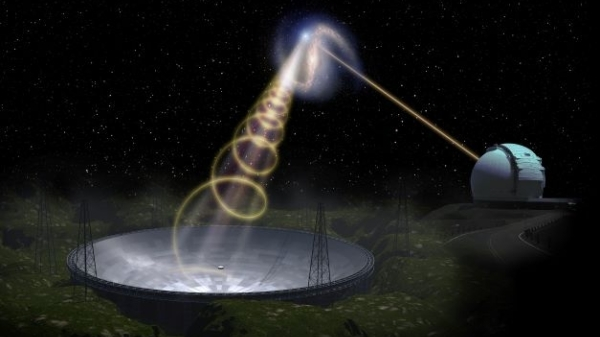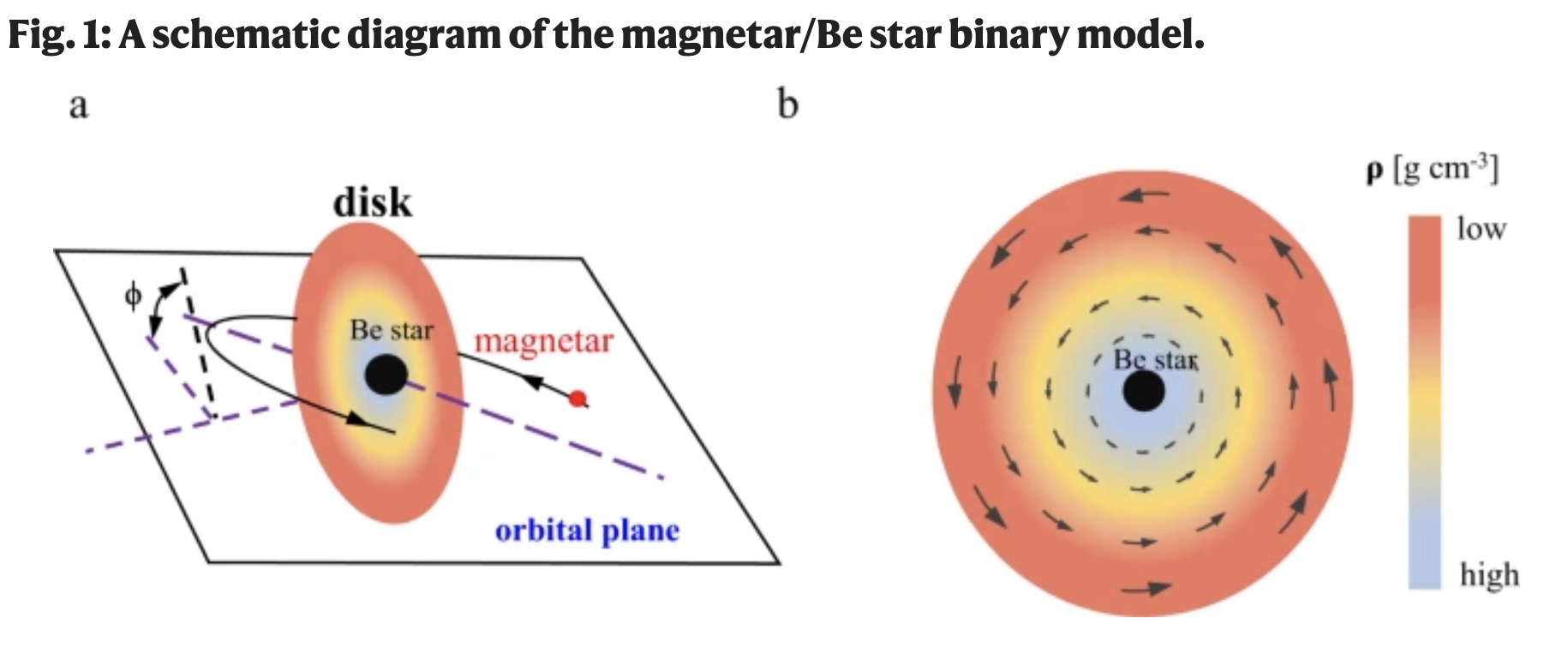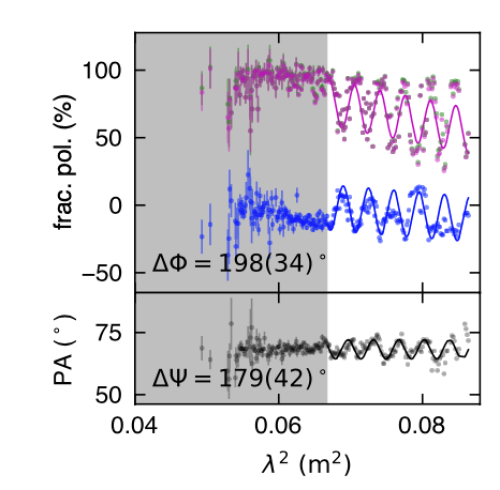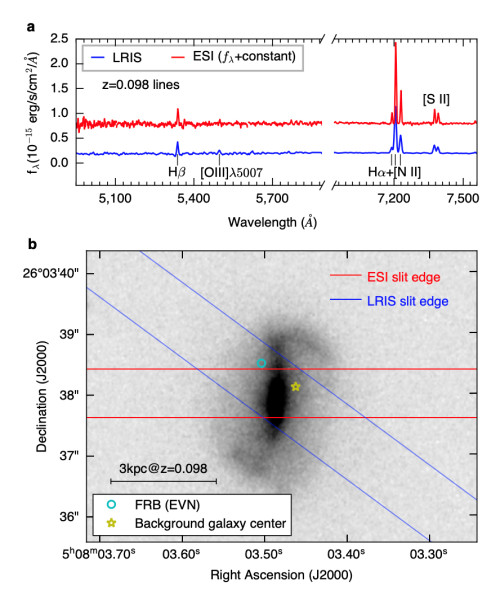
An illustration of the FAST. /CAS
An illustration of the FAST. /CAS
Researchers have observed nearly 1,863 bursts of repeating fast radio burst (FRB) 20201124A, obtaining the world's largest FRB polarization observation sample, thanks to FAST, the Five-hundred-meter Aperture Spherical Radio Telescope and the world's largest single-dish and most sensitive radio telescope developed by China.
Led by researchers from National Astronomical Observatory of China (NAOC) under the Chinese Academy of Sciences (CAS) and Peking University, a study on it was published in the international academic journal Nature on Wednesday.

A screenshot of the study published in the international academic journal Nature. /Nature
A screenshot of the study published in the international academic journal Nature. /Nature
The FRBs are cosmic sources emitting millisecond-duration radio bursts. Although hundreds of FRBs have been discovered, their physical nature and central engine remain unclear.
The variations of Faraday rotation measure and dispersion measure, due to local environment, are crucial clues to understanding their physical nature.
The recent observations on the rotation measure of FRB 20201124A showed a significant variation on a day time scale.

An illustration of short-time scale evolution of Faraday rotations. /CAS
An illustration of short-time scale evolution of Faraday rotations. /CAS
Intriguingly, the oscillation of rotation measure supported that the local contribution can change sign, indicating the magnetic field reversal along the line of sight.
In the study, scientists presented a physical model that explains observed characteristics of FRB 20201124A, proposing that repeating signal comes from a binary system containing a magnetar and a Be star with a decretion disk.
According to the study, the FRB 20201124A can be analogy to the pulsed emissions from the Galactic binary system PSR B1259-63/LS 2883, containing PSR B1259-63 and the Be starLS 2883 .

A schematic diagram of the magnetar/Be star binary model. (A) The Be star locates at the center of the disk. The magnetar is shown as the red point. The stellar disk plane (shown as the black dash line) is inclined to the orbital plane (shown as purple dash lines) with the angle ϕ = π/12. The purple dash line is the major axis of the magnetar's orbit. When the pathways of radio bursts pass through the disk, the interaction between bursts and disk can reproduce the observed variable rotation measure, depolarization, large scattering timescale, and Faraday conversion. (B) The face-on view of the Be star's disk. The magnetic field shown as arrows is assumed as azimuthal (or toroidal) in the disk. This model predicts that the RM contribution from the disk changes sign when the magnetar passes in front of the Be star. The RM variation discovered by FAST supports this scenario. /Nature
A schematic diagram of the magnetar/Be star binary model. (A) The Be star locates at the center of the disk. The magnetar is shown as the red point. The stellar disk plane (shown as the black dash line) is inclined to the orbital plane (shown as purple dash lines) with the angle ϕ = π/12. The purple dash line is the major axis of the magnetar's orbit. When the pathways of radio bursts pass through the disk, the interaction between bursts and disk can reproduce the observed variable rotation measure, depolarization, large scattering timescale, and Faraday conversion. (B) The face-on view of the Be star's disk. The magnetic field shown as arrows is assumed as azimuthal (or toroidal) in the disk. This model predicts that the RM contribution from the disk changes sign when the magnetar passes in front of the Be star. The RM variation discovered by FAST supports this scenario. /Nature

An illustration of oscillations in linear/circular degree and position Angle of polarization detected in FRB 20201124A. /CAS
An illustration of oscillations in linear/circular degree and position Angle of polarization detected in FRB 20201124A. /CAS
When the magnetar approaches the periastron, the propagation of radio waves through the disk of the Be star naturally leads to the observed varying rotation measure, depolarization, large scattering timescale, and Faraday conversion, said the study.
Li Kejia, researcher at NAOC and physics professor from Peking University, told China Media Group (CMG) that the study results are important observational data for future studies of physical properties of FRBs, prompting to search for FRB signals from Be/X-ray binaries.

An illustration of the fit of RM evolution of FRB 20201124A using the binary model. The blue scatter is the mean of observed ΔRM in day, and the red line is the predicted evolution of our model. The blue shadow region is the range of observed RM. In the calculation, the disk density is ρ0 = 3 × 10−14 g cm−3 close to the star and has a steep-decay index β = 4. The orbital period is taken to be 80 days with orbital eccentricity e = 0.75. Our model can reproduce the main structure of RM evolution. However, there are some minor structures can not be reproduced. These minor structures may be caused by the clumps in the disk. /Nature
An illustration of the fit of RM evolution of FRB 20201124A using the binary model. The blue scatter is the mean of observed ΔRM in day, and the red line is the predicted evolution of our model. The blue shadow region is the range of observed RM. In the calculation, the disk density is ρ0 = 3 × 10−14 g cm−3 close to the star and has a steep-decay index β = 4. The orbital period is taken to be 80 days with orbital eccentricity e = 0.75. Our model can reproduce the main structure of RM evolution. However, there are some minor structures can not be reproduced. These minor structures may be caused by the clumps in the disk. /Nature

Spectral and high-resolution image observations of FRB20201124A's host galaxy through the Keck telescope. /CAS
Spectral and high-resolution image observations of FRB20201124A's host galaxy through the Keck telescope. /CAS

